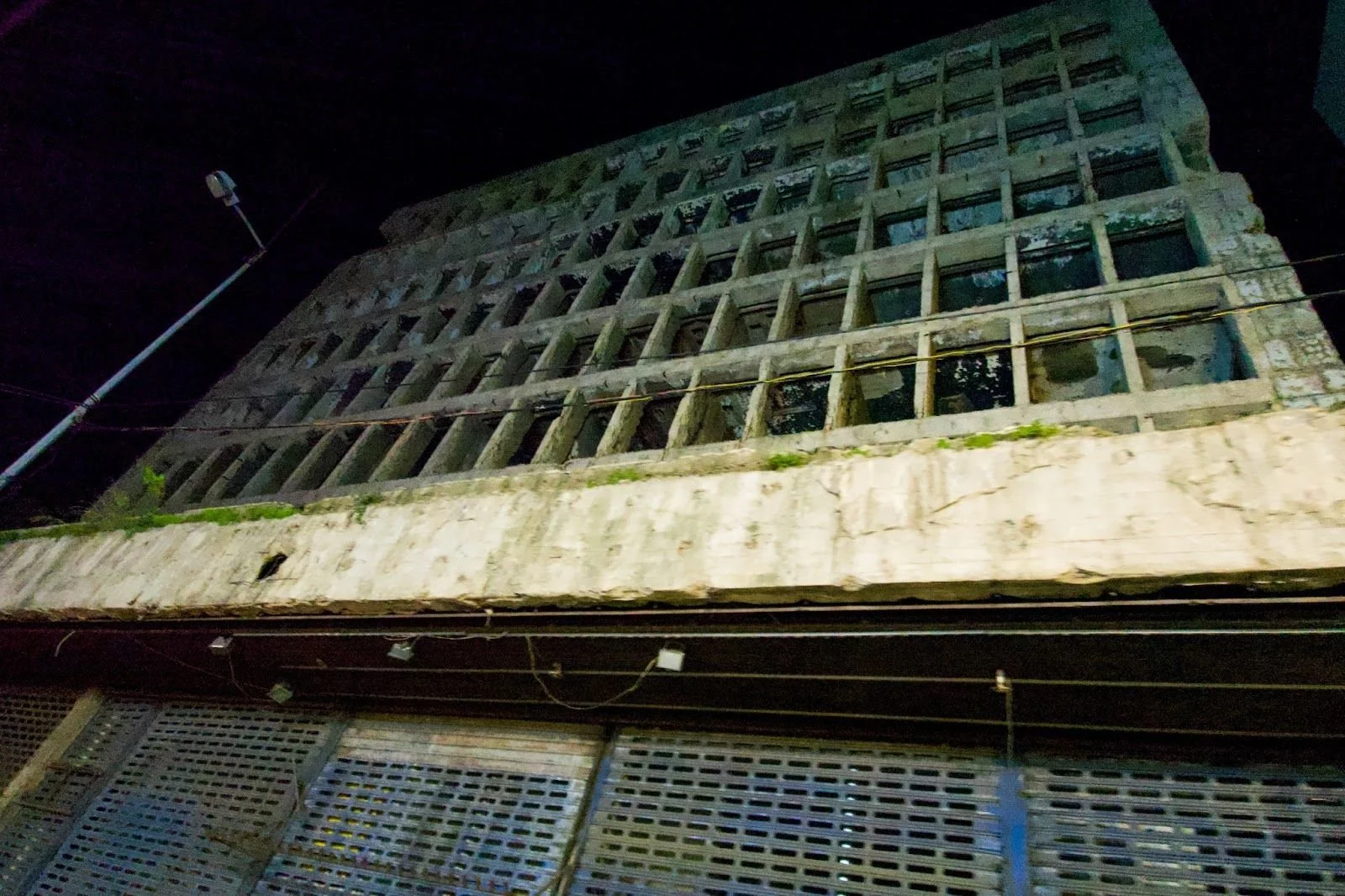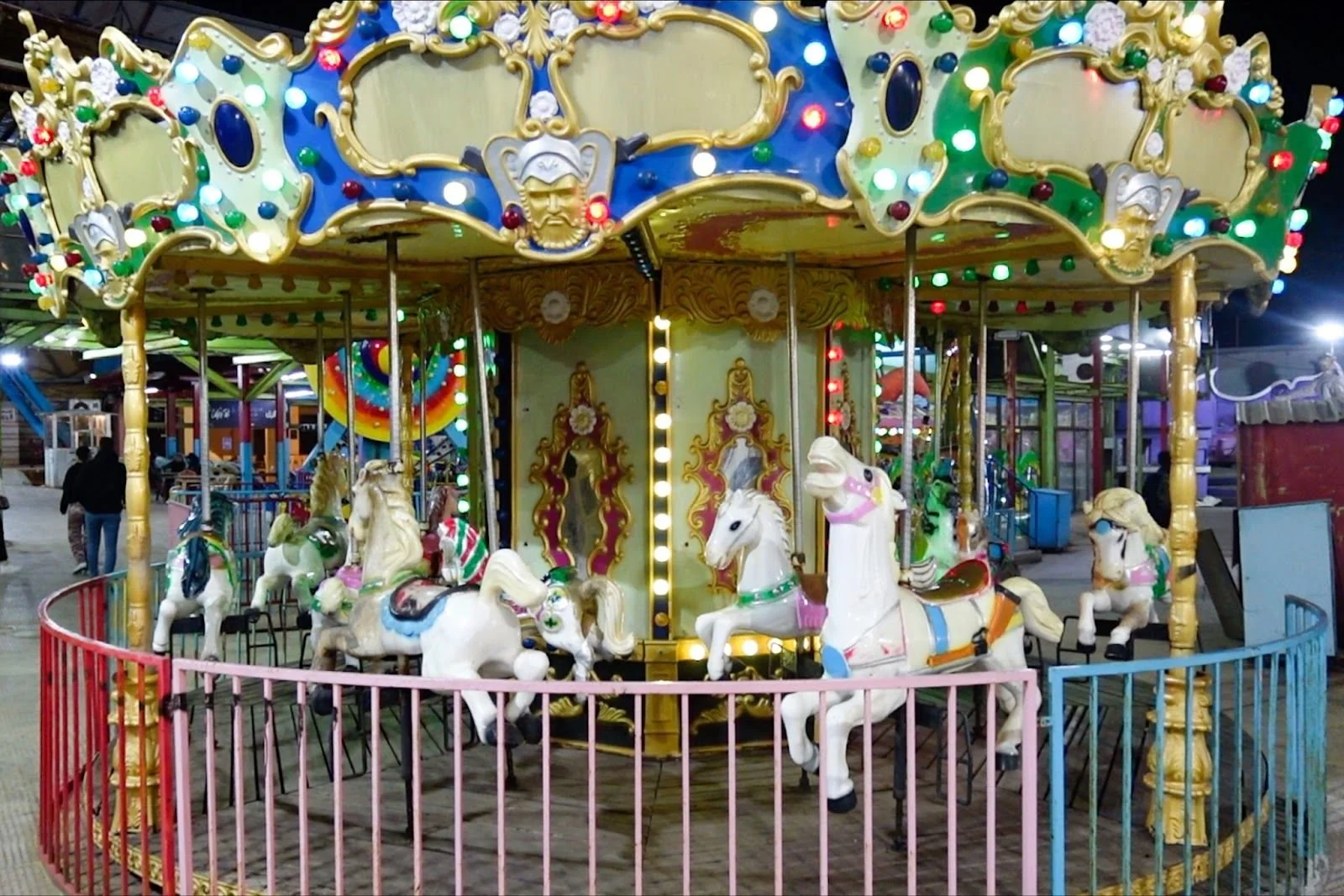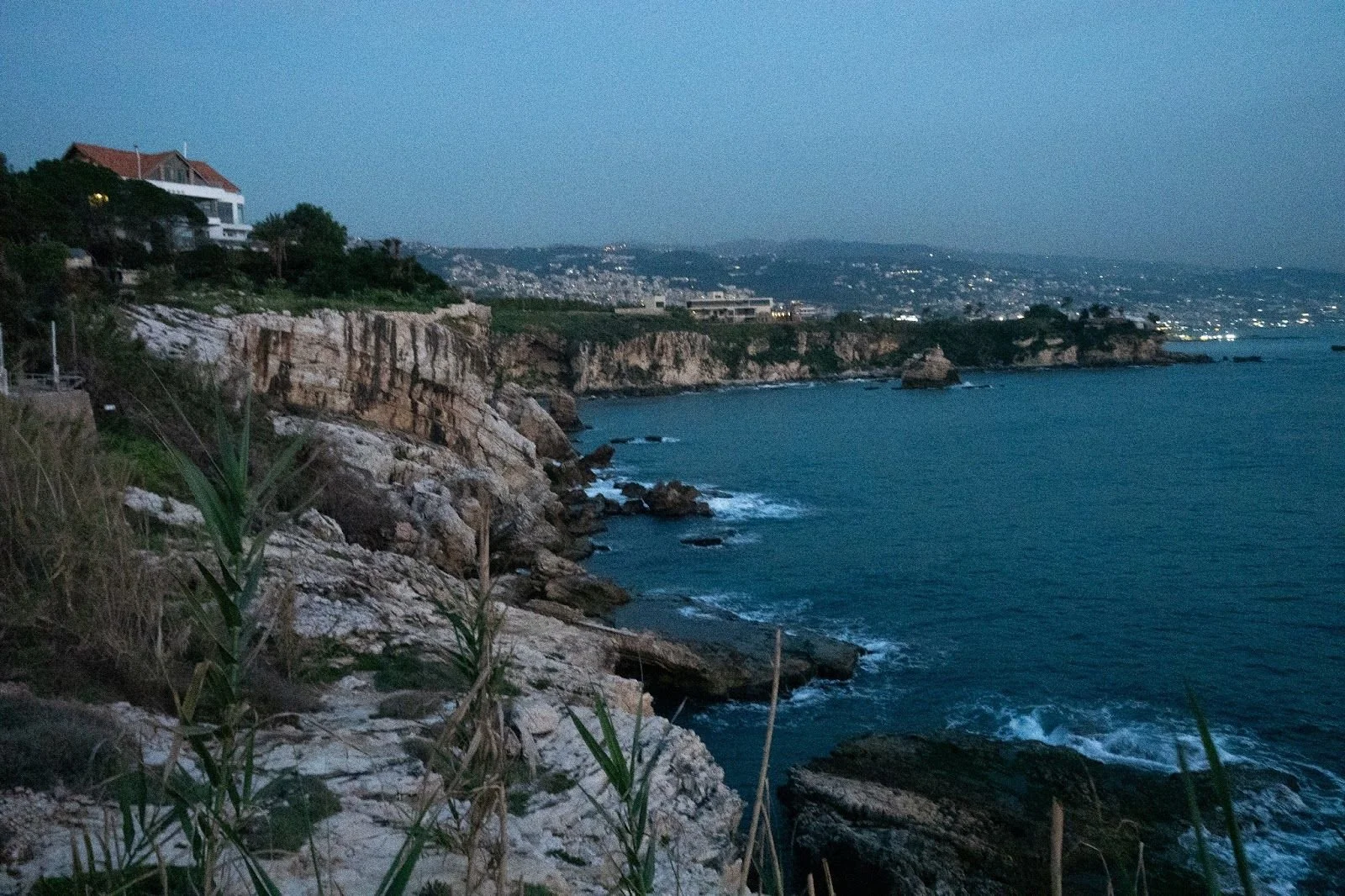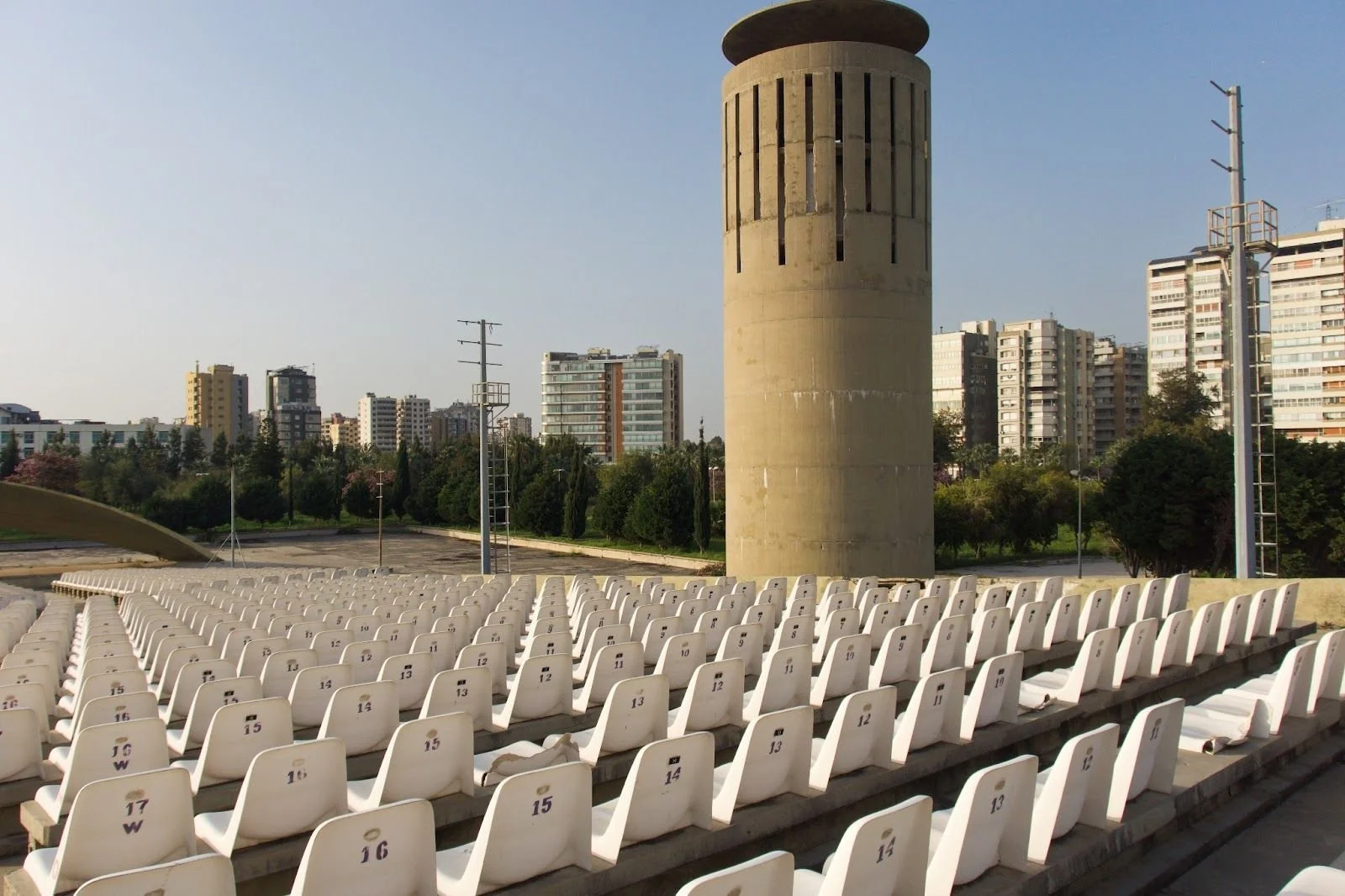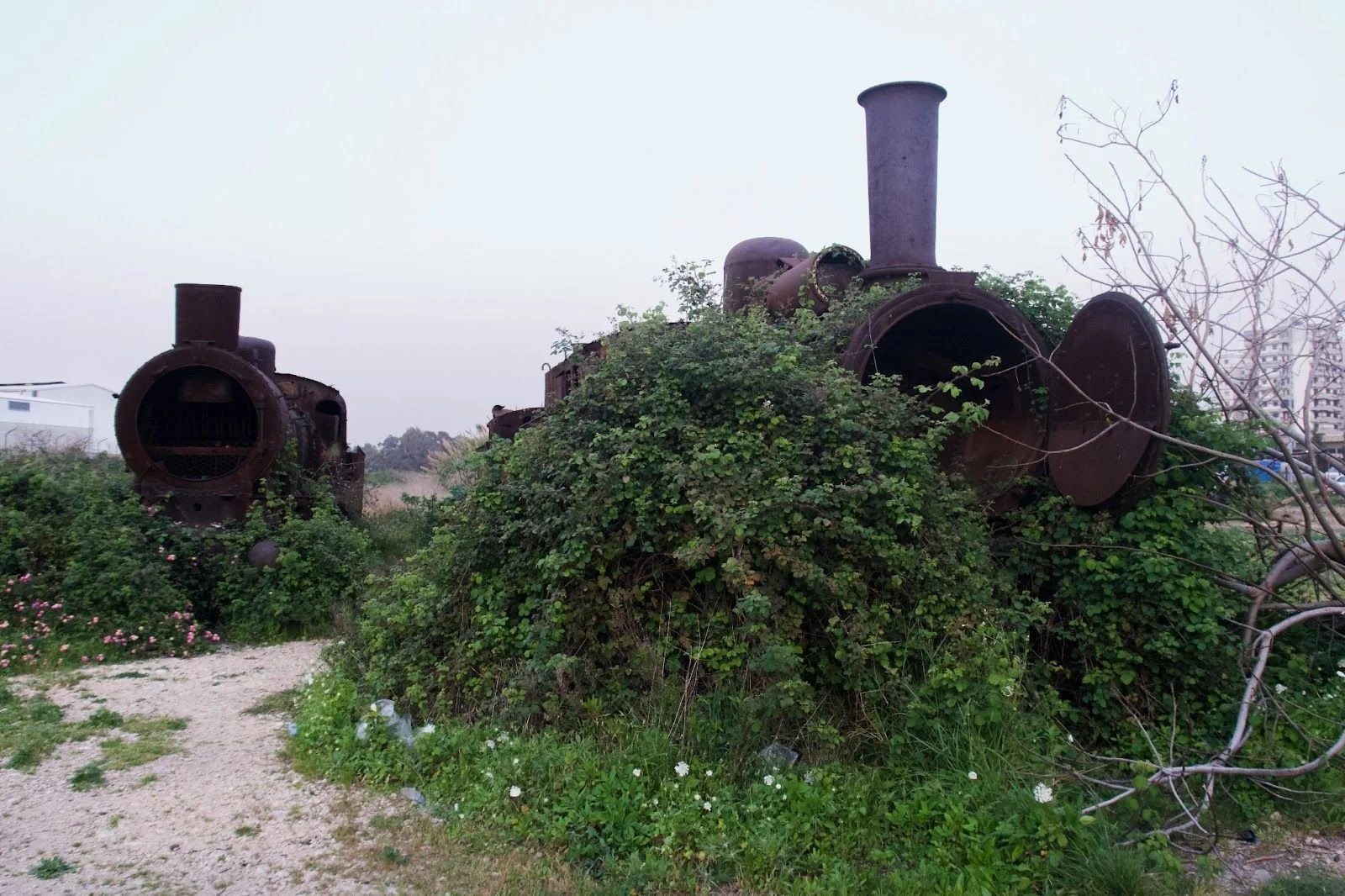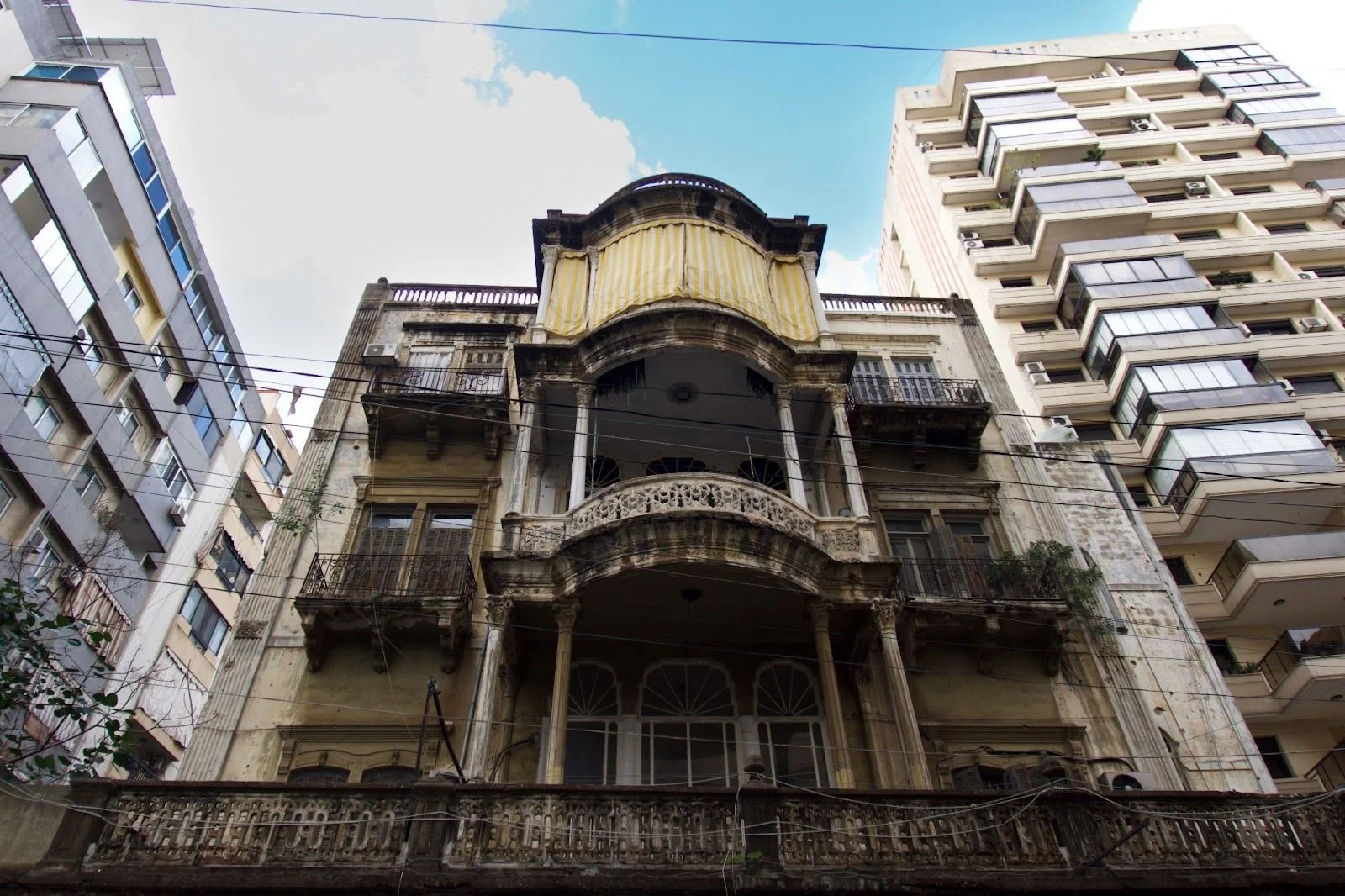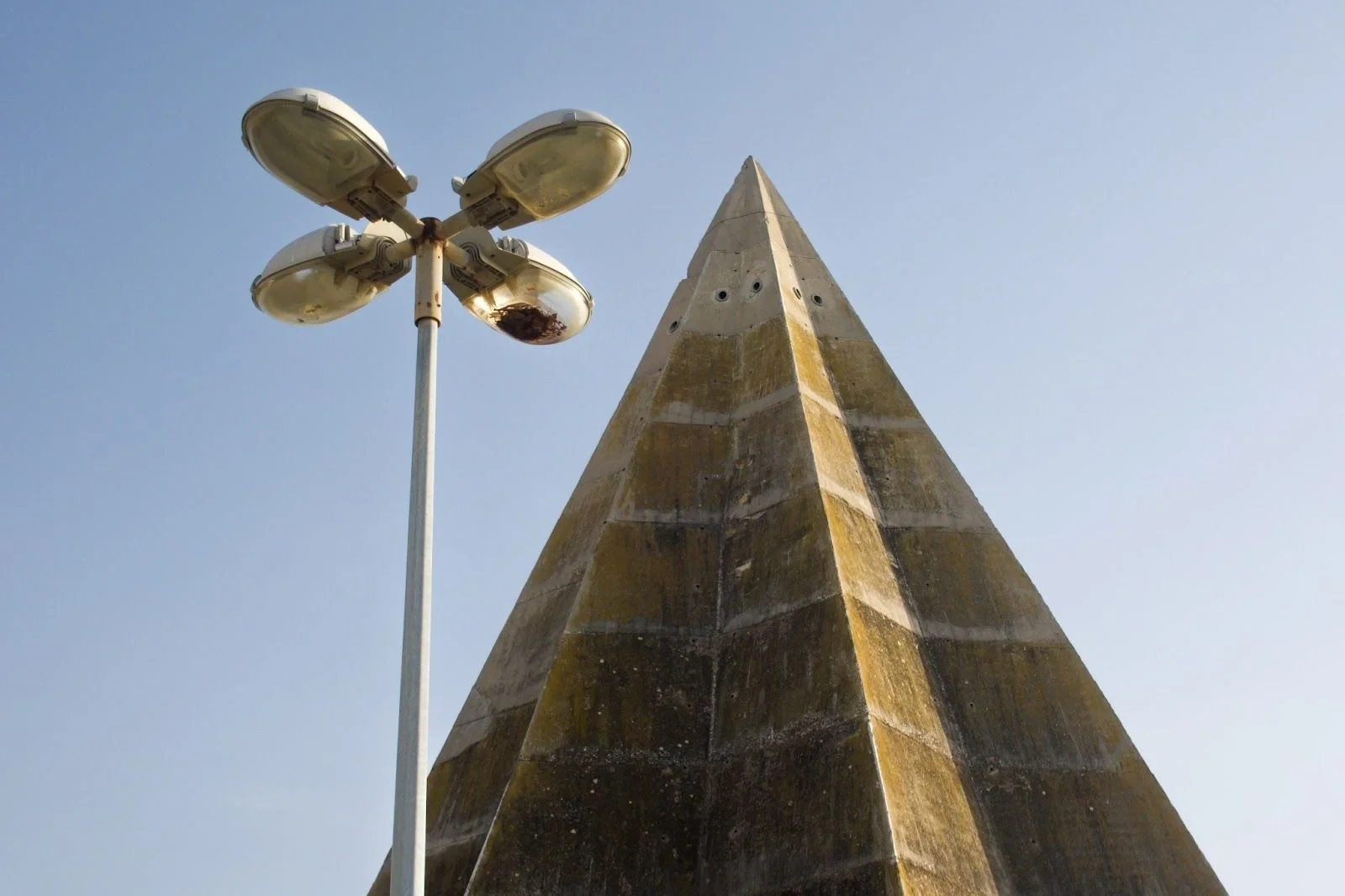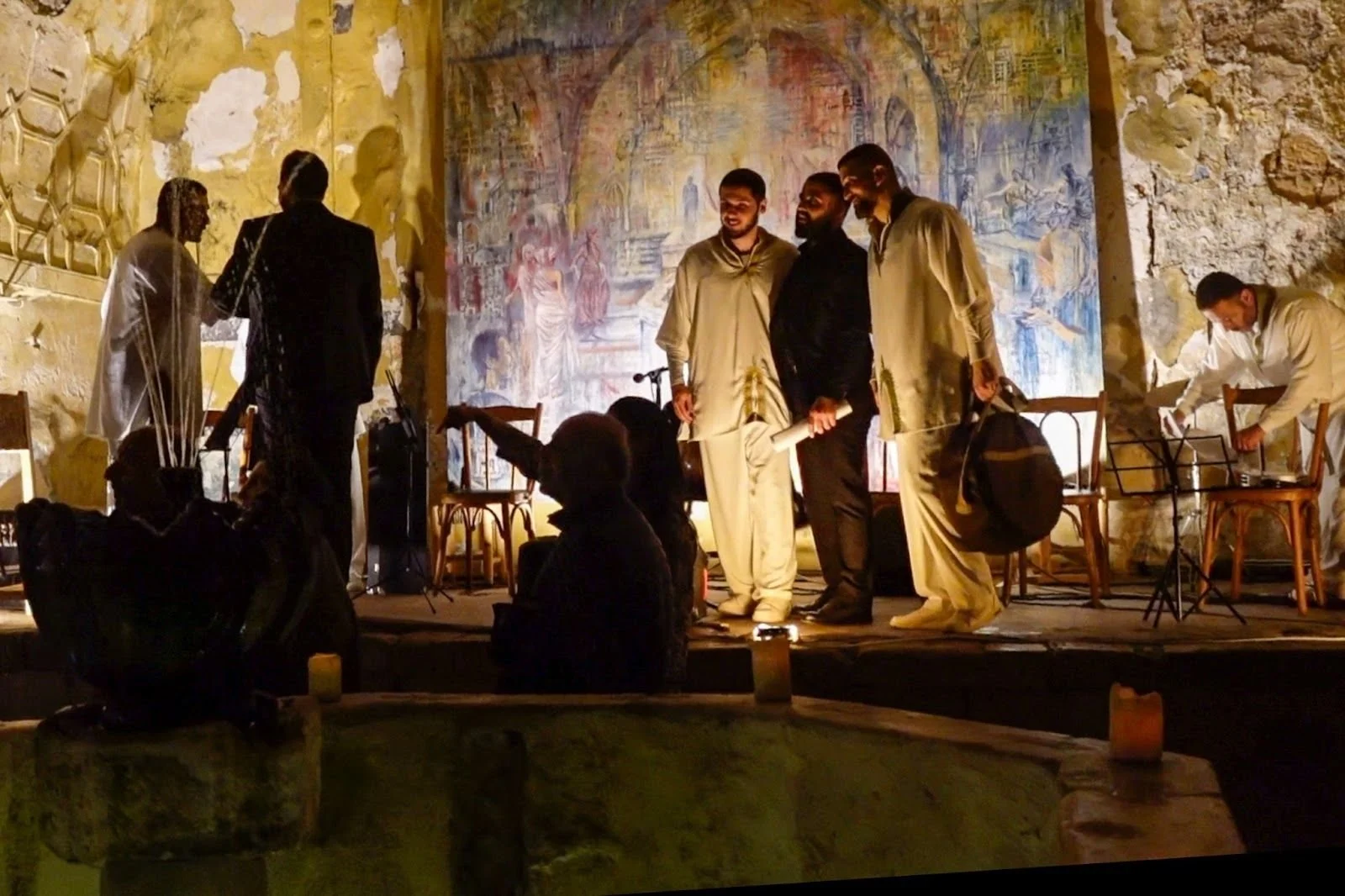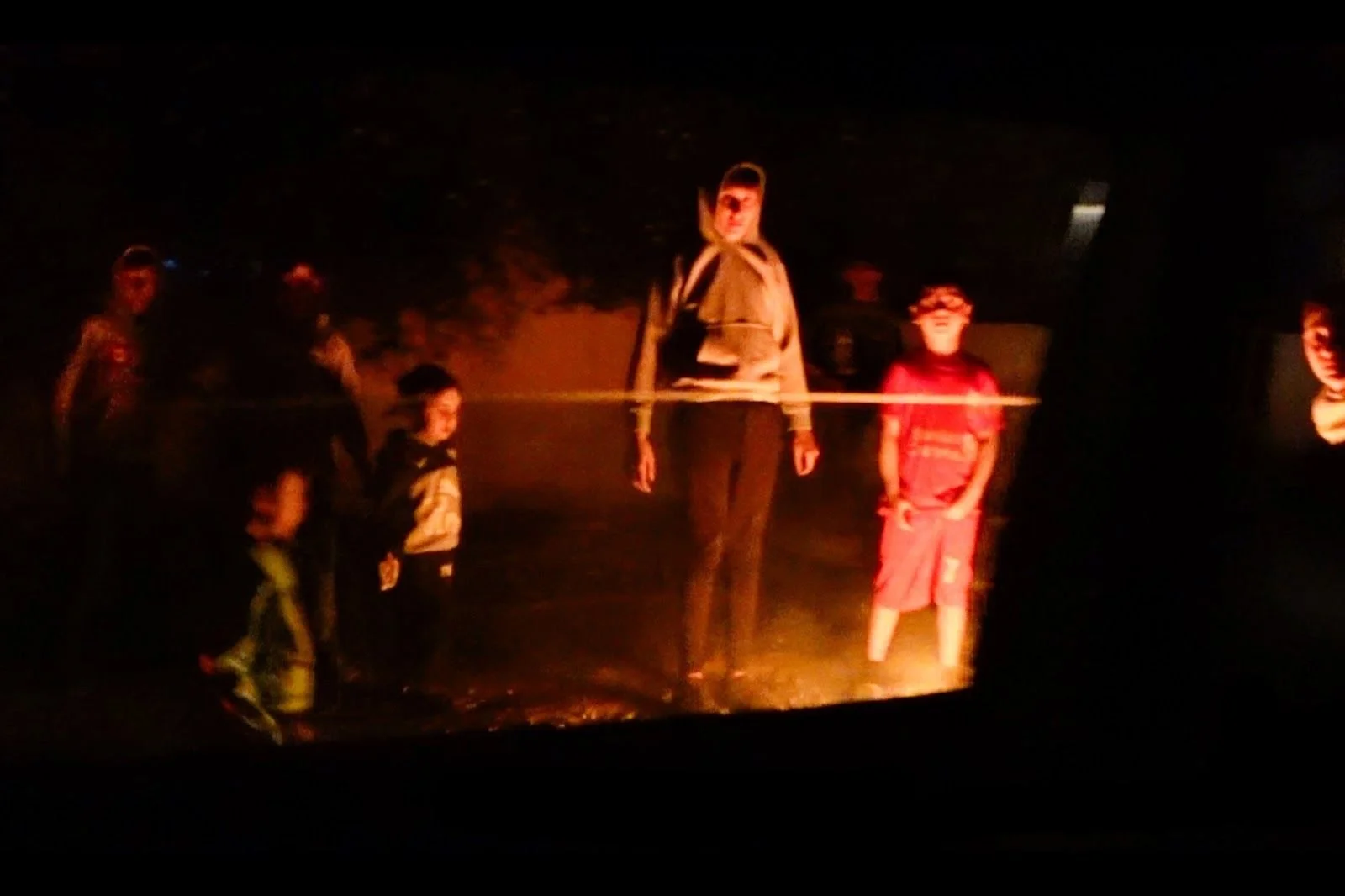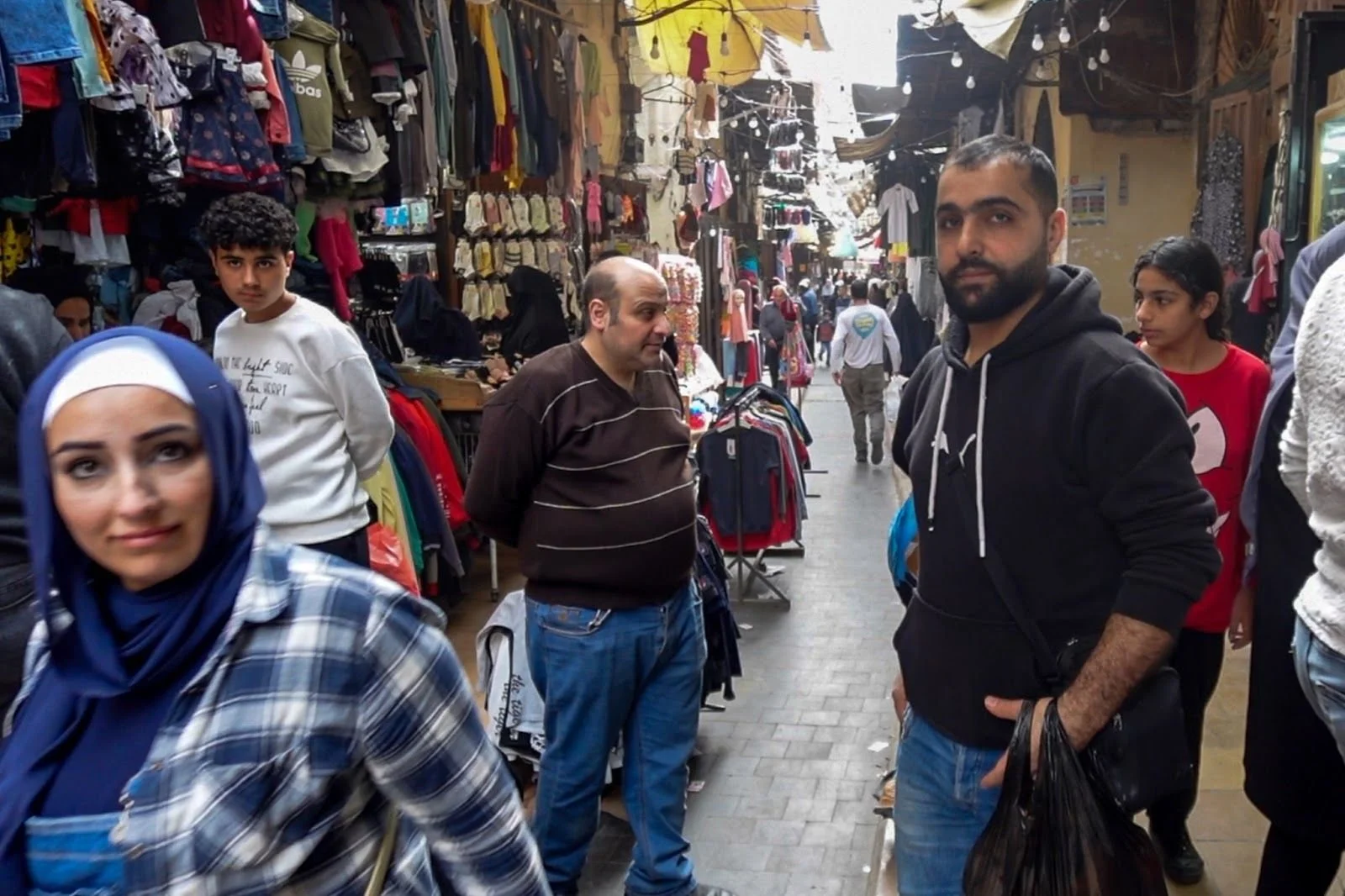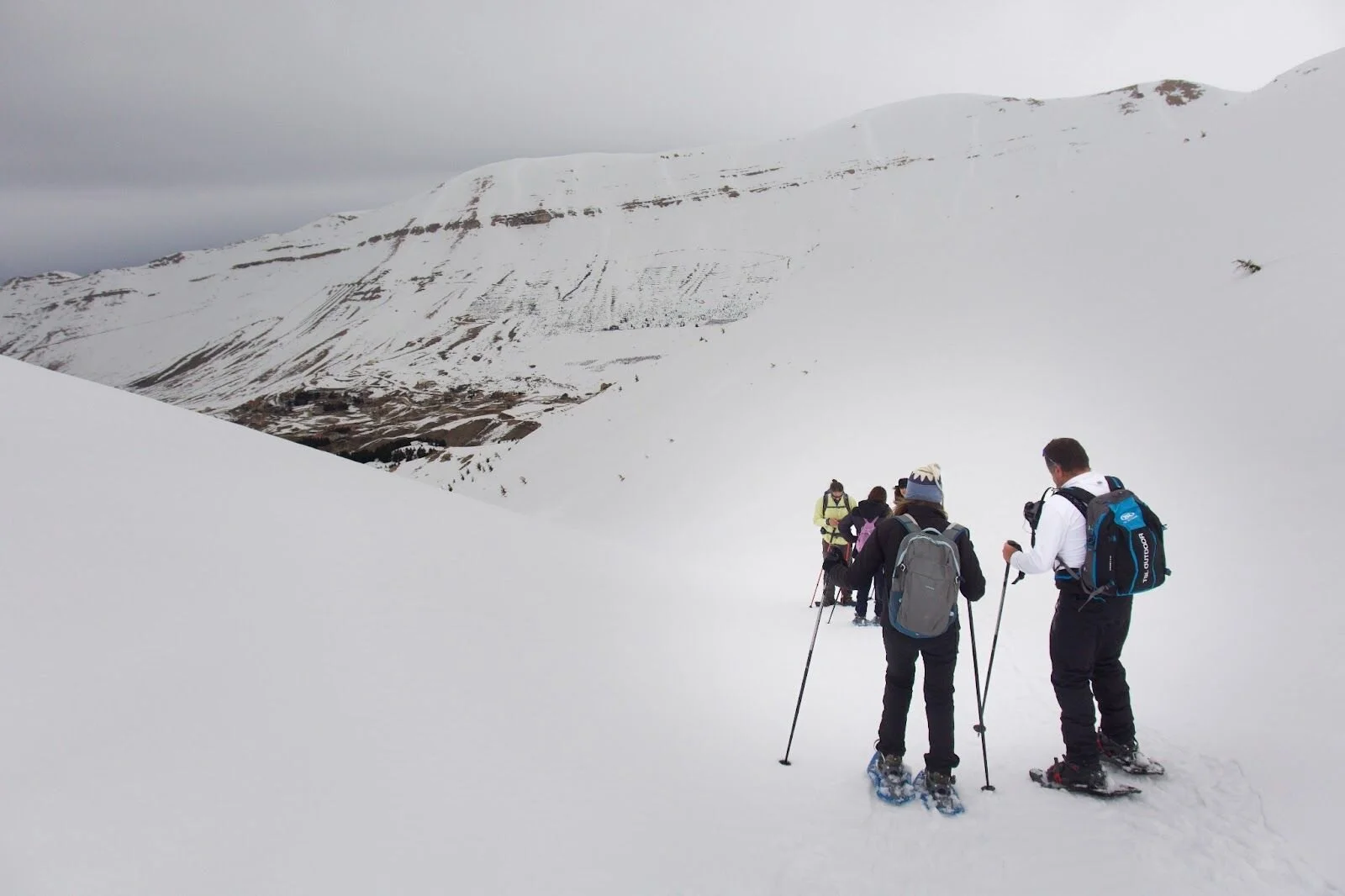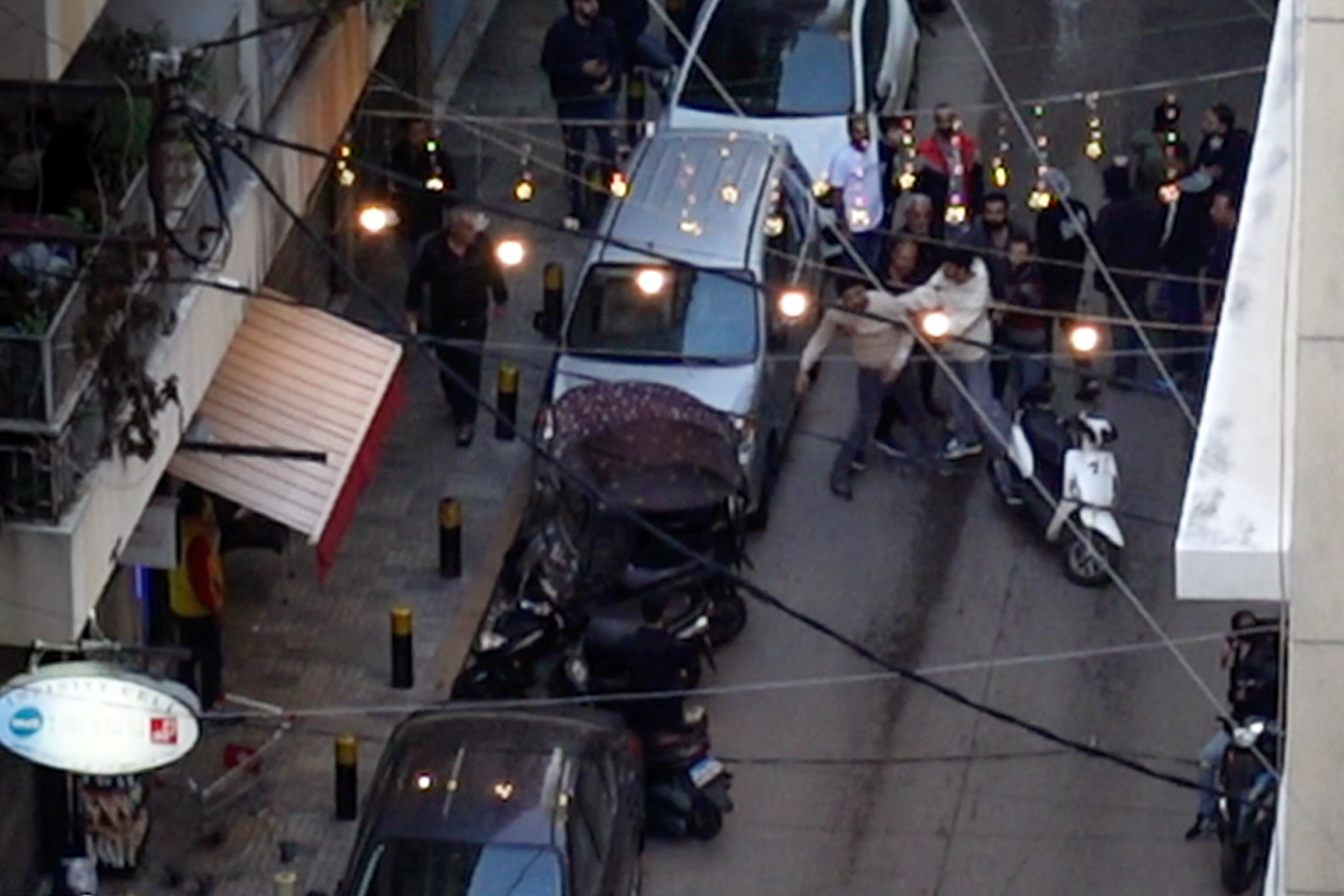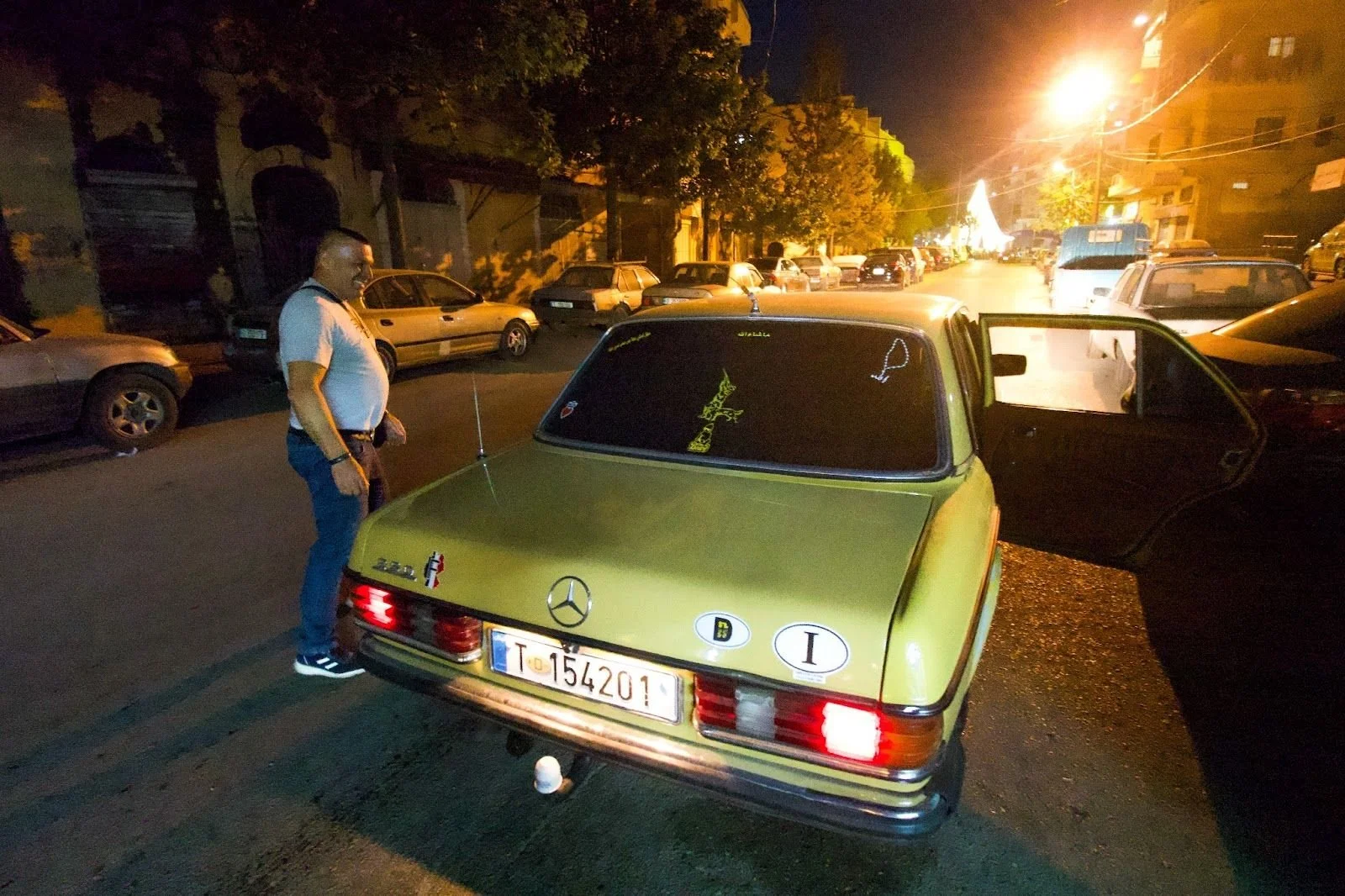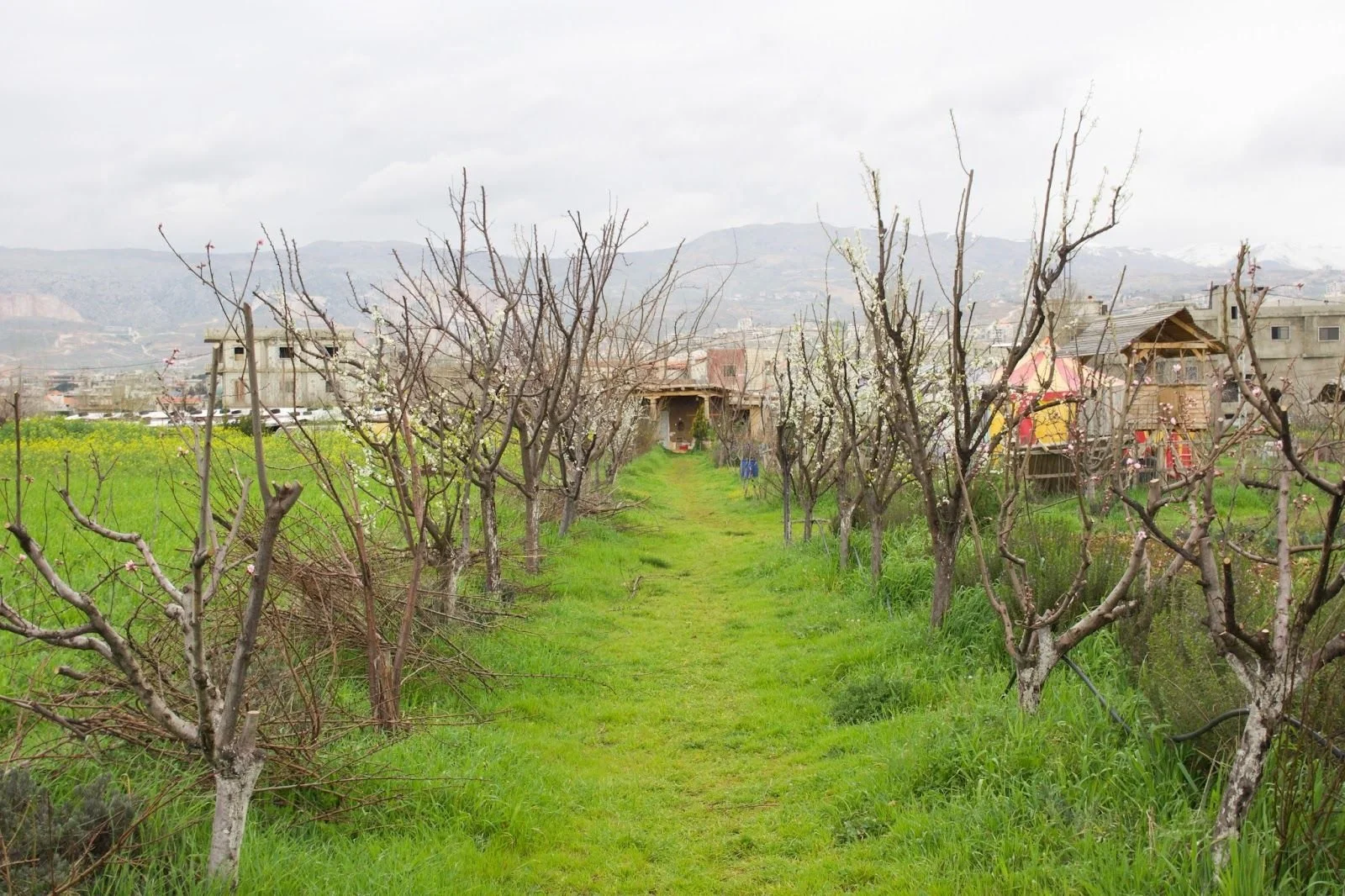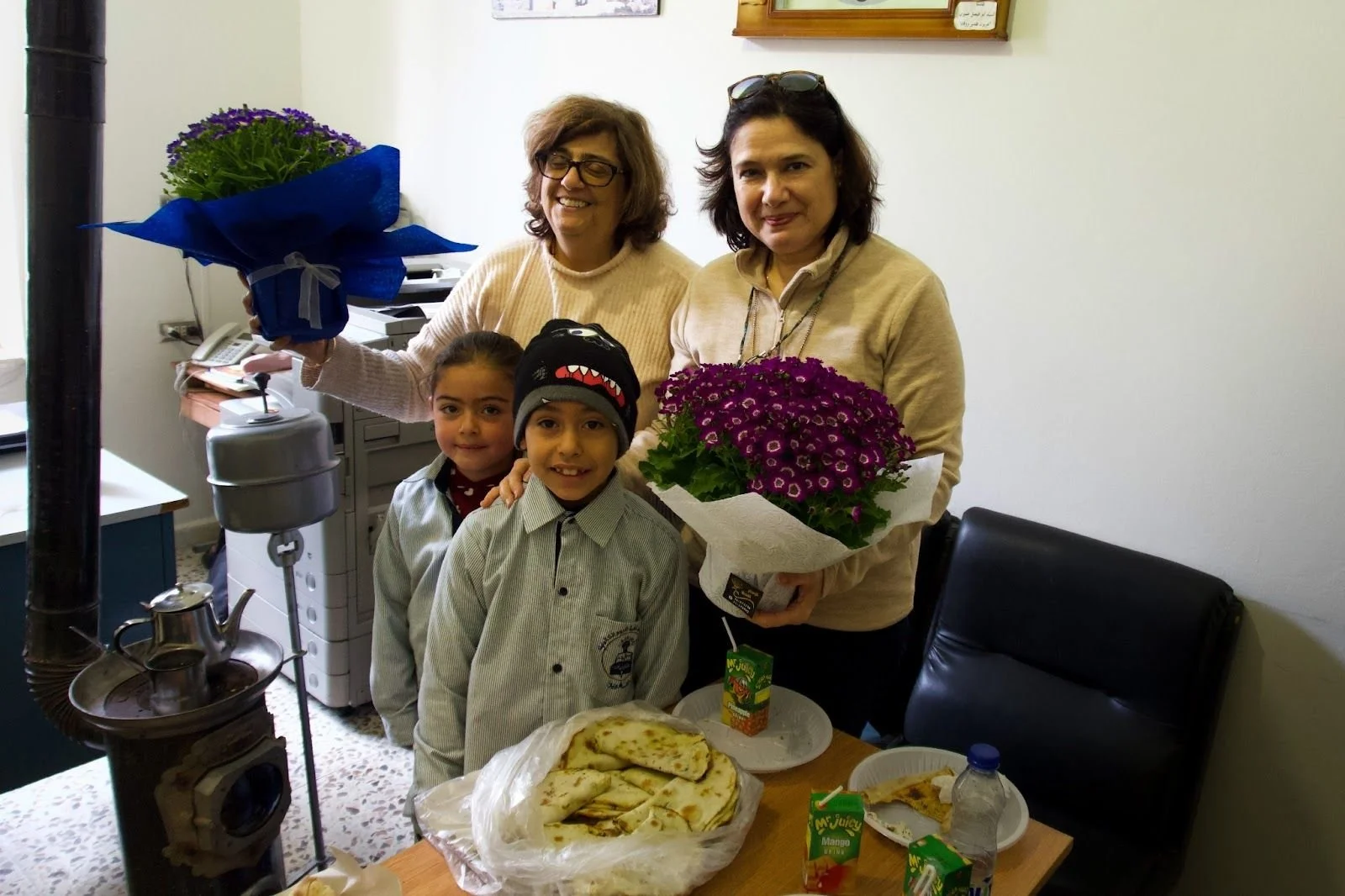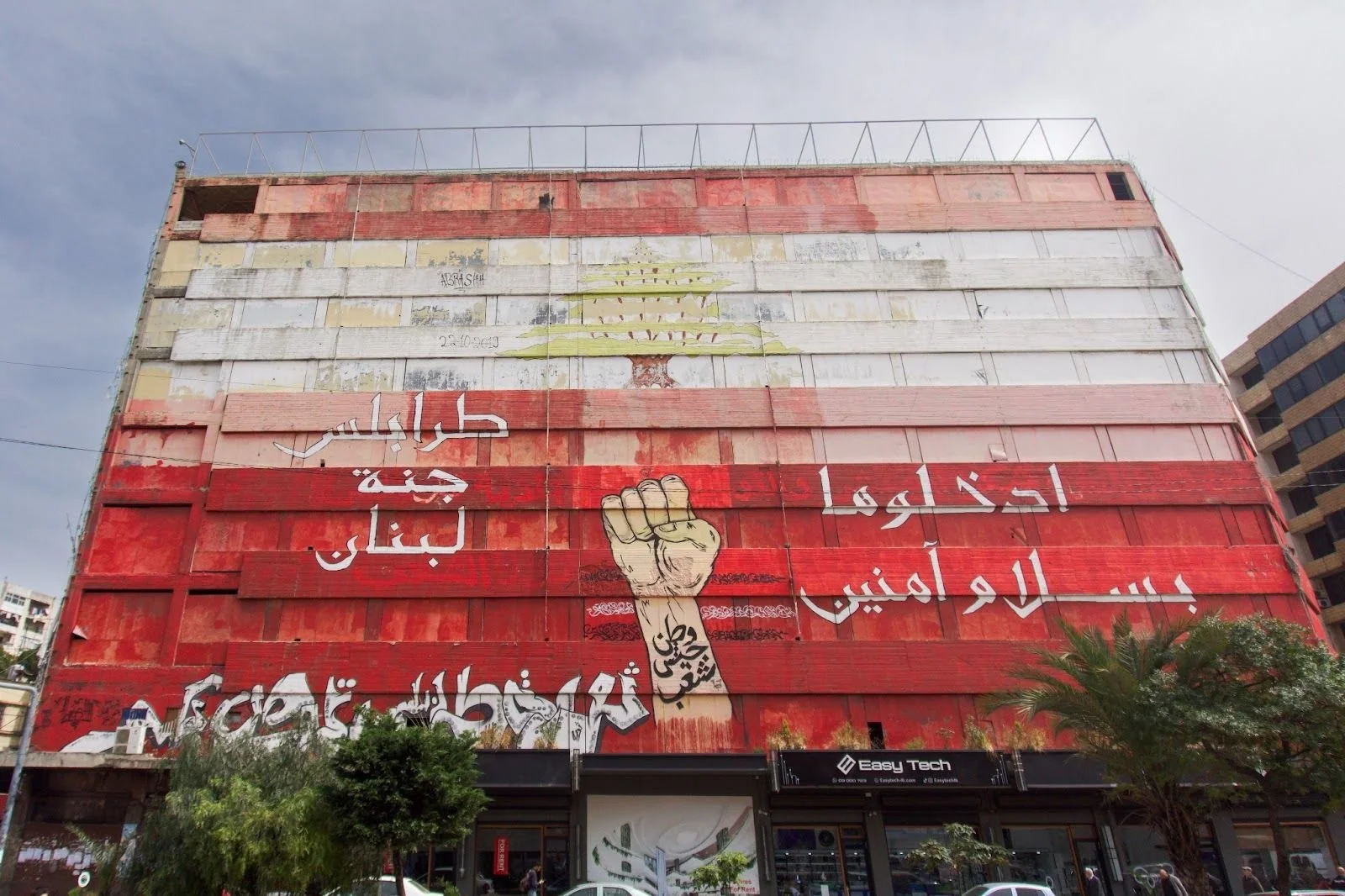Struggle and Resilience in Lebanon's Polycrisis: A Photographic Exploration
Trigger Warning:
This piece contains descriptions of war, systemic collapse, displacement, economic hardship, and violence, including references to bombings, refugee struggles, and political instability. Some images and narratives may be distressing for readers sensitive to conflict, crisis, or social injustice. Reader discretion is advised.
Summary
This digital exhibition offers a vivid, on‐the‐ground look at a nation in crisis. Through evocative photographs and personal interviews, it explores the overlapping political, economic, and social challenges that shape everyday life in Lebanon. The images capture everything from the stark reality of marginalized neighborhoods to the unexpected vibrancy of coastal enclaves, conveying a felt sense of both hardship and hope. As communities navigate systemic collapse, grassroots survival strategies emerge, revealing the enduring spirit of a people determined to carry on. Weaving personal stories with broader societal shifts, this work reflects on resilience amid relentless adversity.
Arriving in Beirut
When I landed in Beirut on a flight from London in March 2024, I took a taxi from the airport in Dahieh and immediately sensed how drastically the country had changed since my last visit. Yet, within just a few months, with Israel’s invasion of Lebanon, it would undergo an even more dramatic shift. My best friend had moved to Beirut in 2017, and since then, I had visited Lebanon multiple times, my last trip being just before the 2019 social revolution.
Getting a ride from the airport into Dahieh—an area that, just a couple of months later, would become the target of severe Israeli bombardment due to Hezbollah’s control—still felt calm before the storm. It wasn’t difficult to find a ride, though the run-down vehicle with a shattered back window that I got into hardly looked like a taxi. As we drove into the city, I was struck by how drastically the atmosphere had changed since my previous visits.
Beirut at Night: Against a backdrop of mostly unlit houses, the Lebanese flag quietly recalls a storied past. An ancient myth from the Sumerian Epic of Gilgamesh tells of Gilgamesh felling a sacred cedar, evoking a time when the land was revered as divine. Today, Lebanon’s endangered cedars symbolize both a fertile breadbasket and a remarkable biodiversity hotspot. Nestled in the Mediterranean Basin, this region covers just 5% of the earth yet holds about 20% of the world's botanical diversity. Yet, even with such natural wealth, environmental concerns rarely take center stage. This article seeks to address this absence by framing the polycrisis as a complex web of interconnected challenges affecting a society that is deeply embedded in and inseparable from the broader ecosystems it inhabits.
Beirut, once called the “Paris of the Middle East,” was a vibrant city bridging East and West. Though it had a better reputation back then, deep class and sectarian divisions still shaped the country. Rural areas lacked schools, hospitals, and infrastructure, forcing many to migrate to the city’s outskirts in search of low-paying jobs.
Now, Beirut feels like a shadow of its former self. It has grown into a sprawling metropolis, yet much of it is in darkness, with most buildings left without reliable electricity.The Lebanese lira, once relatively stable, has collapsed. During my last visit in 2019, a taxi cost approximately 20 USD, the equivalent of around 30,200 LBP at the time. By March 2024, that same fare had inflated to roughly 1,791,940 LBP—an increase of 5,830%. As a result, Lebanon’s economy became almost entirely dollarized. The driver, visibly struggling—his car in such poor condition that it wouldn’t even be allowed on European roads—understandably overcharged me, and I ended up paying 30 USD.
Context
Lebanon has faced a relentless series of crises in recent years, making international headlines for war, a devastating port explosion, and one of the worst financial collapses in modern history. As the risk of global decomplexification due to various existential threats intensifies, Lebanon offers a stark case study in how societies navigate rapid and multifaceted collapse. Since the failure of the 2019 political revolution, the country has spiraled into economic ruin—the central banking system has collapsed, GDP has fallen by 40%, and the currency has lost 98% of its value. On top of this, fuel and medical shortages, unreliable electricity, and a severe refugee crisis from the Syrian civil war have made daily life increasingly precarious. With a population of around six million, Lebanon hosts approximately one million refugees, giving it the highest number of refugees per capita globally. Escalating in October 2023 and culminating in a full-scale war in the summer of July 2024, the increasing hostilities between Israel and Hezbollah have further exacerbated societal pressures in Lebanon.
Although these photographs were taken less than a year ago, the situation in Lebanon and the Middle East has changed significantly since then. The fall of the Assad regime in Syria in December 2024, the substantial weakening of Hezbollah through Israel, and the direct conflict between Iran and Israel have all led to major power shifts within the region. Furthermore, after a two-year political deadlock, Lebanon formed a new government on February 8, 2025, led by Prime Minister Nawaf Salam, aiming to implement financial reforms and reconstruct war-torn areas. While Lebanon continues to face severe challenges, the new government offers glimpses of hope for its inhabitants. These pictures depict a Lebanon before full-scale war and where the new government still has not been formed. They aim to encapsulate Lebanon's complex reality and provide a nuanced visual narrative of a society grappling with collapse while striving to sustain everyday life.
Current Realities in Lebanon
Lebanon today is a place of stark contrasts. The crises affect every part of society, but their impact varies—some neighborhoods struggle with daily hardship, while luxury resorts seem almost untouched. Different segments of the population experience the collapse in their own way, creating a landscape where struggle and resilience exist side by side.
Colourful Neighbourhood in Tripoli: Lebanon’s most marginalized city, Tripoli, has become a point of departure for Lebanese or Syrians attempting to escape the country by boat to Cyprus. The sky is a light yellow as it is covered by smog.
Lebanon’s Elite living through the Breakdown: Near Byblos, the coastline remains lively despite ongoing crises. At Babel Bahr restaurant, seafood is served to a packed crowd, while further along the coast, restaurants bustle with visitors. Many are Lebanese expatriates returning home, a common sight even after hostilities escalated in summer 2024.
The richest 10% hold nearly 70% of the country’s wealth and can continue their luxurious lifestyle, while common people struggle for basic necessities. Corruption and a sectarian power structure further entrench social divisions. Lebanon shows that collapse does not level inequality—it deepens it, creating a widening gap between survival and excess.
Abandoned Building in the Night: A derelict building in the capital Beirut, left unfinished due to a lack of funds. It is common to come across incomplete infrastructure even in wealthy neighbourhoods. An unlit streetlamp stands nearby as an example of the city's unreliable electricity supply. Houses like these serve as shelters for refugees, though they are unsafe due to a lack of structural monitoring.
Amusement and Amnesia: An amusement park on Beirut’s coast, which is also featured in the movie Capernaum, where a young boy abandons his family after they marry off his underaged sister. After walking alone in the city, he finds himself in front of a carousel, a fleeting beacon of hope amid a life marked by relentless hardship.
Tom Young, an artist who produced paintings inspired by this carousel, noted seeing the carousel “as a symbol of childhood memories, the resilience of the human spirit in the face of adversity, and the potentially unhealthy amnesia often required to keep going after and during traumatic events.”
Negligence and the Aftermath of the 2020 Explosion: A dead pigeon lies on the stone floor of a Beirut building, still partially destroyed by the 2020 port explosion triggered by unsafe ammonium nitrate storage. This disaster displaced over 100,000 people, killed around 200 people and devastated much of the city. Although a temporary roof was installed, the windows remain shattered, and the homeowner has no desire to repair the structure given the low demand for new apartments in Lebanon. The image represents the negligence that persists even four years after the explosion.
Lebanon’s Coastline: Byblos, where the Bible is said to have emerged, is normally a busy tourist town. However, since the worsening situation and especially since October 7th 2023 and Israel's actions in Gaza, fewer people are coming. Local shop owners speak of financial difficulty due to lack of visitors, as their shops are mostly dependent on tourism. Despite this, nature still brings a sense of calmness to the locals around it. While foreign visitors have largely stopped coming, the Lebanese coastline is still lively in summer as many Lebanese return from all over the world to spend time in their home country.
Abandoned Stage in Tripoli: Designed by Brazilian architect Oscar Niemeyer in 1963, the Rachid Karami International Fair in Tripoli consists of 15 structures, including an exhibition hall and a dome-shaped experimental theater. Construction halted in 1975 due to the Lebanese Civil War, leaving the site incomplete. In January 2023, UNESCO listed the fairgrounds on its World Heritage in Danger list.
Abandoned Locomotives at Tripoli Station, Taken Over by Nature: Two old locomotives, overtaken by plants, sit in the vast, abandoned yard of the station. Built in 1911, Tripoli's railway station once connected the city to Homs, Syria, and was the terminus for the Orient Express from 1920 to 1940. The Lebanese Civil War (1975-1990) left the railway in ruins, and the station has been abandoned since 1975. Since then, Lebanon hasn’t had an operating train system. It now stands as a quiet reminder of the country's early ambitions, delayed by years of conflict.
Disappearing Heritage: In Beirut, newly constructed buildings stand beside historic villas, but these old houses are becoming increasingly rare, often left to decay to make way for more profitable developments. Many are abandoned until they collapse.
Pyramid-Like Structure in Tripoli: Another architectural feature at the Rachid Karami International Fair is a pyramidal structure. Although still largely abandoned, the area has recently been revived by hosting events such as a Ramadan evening food market.
Survival and Life in Collapse
Despite the challenges, life in Lebanon continues. People still attend concerts, meet friends, and go about their daily routines. With a long history of conflict, the Lebanese have learned to adapt to ever-changing circumstances. Even in the midst of chaos, moments of joy persist—reminders of what makes survival worthwhile.
Exhibition and Concert in a Refurbished Bathhouse in Saida during Ramadan: An art exhibition by Tom Young is held at the restored 18th-century Hammam in Saida's Old Souk. The bathhouse, once a communal hub, was abandoned in the late 1940s due to the advent of in-home water facilities. Recently it was refurbished to preserve its historical significance.
Famous for its historic souks and stunning coastline, Saida becomes a lively gathering place for Muslims from across the Middle East during Ramadan. Each evening, the streets fill with music, the smell of food, and people strolling through the markets. Many buildings in the city lack reliable electricity, yet during these festival nights, everything is brightly lit. Located in South Lebanon, about an hour from the Israeli border, the city and its surrounding villages have long been affected by conflict. In February 2024, Israeli strikes hit nearby villages, and during the summer of 2024, the city itself was repeatedly attacked in Israel’s invasion of Lebanon. Most recently, in February 2025, a senior Hamas leader was killed there.
Fire in a Refugee Zone in Tripoli: In Tripoli's suburbs, Syrian and Palestinian refugees live in informal housing. Many families endure harsh conditions, with militias or mafias often assuming “state role.” Young refugees burn plastic in the streets of these settlements to gain light. Our taxi driver stops the car, steps out, and extinguishes their fire with a bottle of water. The fumes from burning plastic are toxic, and uncontrolled fires pose a risk in neighborhoods. After the fire is put out, the children are left in total darkness as their streets and homes lack lighting at night.
Pedestrians in Tripoli’s Souks: While the city struggles economically, it has a vibrant culture and it is internationally known for its souks (markets). They offer a variety of traditional Lebanese dishes and are known for their olive oil soap bars. More conservatively oriented than the capital Beirut, Tripoli has a majority Muslim population. Its proximity to Syria exposed the people to various ISIS attacks in the past, although the city is currently much safer than Lebanon’s south.
Syrian Refugee Making a Living: A Syrian boy at the Corniche in Beirut sells sweets to earn money. Many young Syrians like him live in occupied buildings and often belong to informal groups due to a lack of other options. They are required to give a significant portion of their income to these groups in exchange for a place to sleep in the shelters that the street mafias control.
Snowshoe Walking in the Mountains of Lebanon: A day trip hiking through the snowy Lebanese mountains with journalist Norbert Schiller and Zina Hemadi. On the left, the sea stretches endlessly, while on the right, the Bekaa Valley extends into Syria. Nearby, one of Lebanon’s last remaining Cedar forests is being carefully preserved. Small shops craft souvenirs from cedar wood, which can only be used when it naturally falls from the trees.
Street Fight in Hamra, Beirut: Two men locked in a tense situation which almost escalates into a street fight. Fortunately, bystanders intervene before this fight worsens. In Lebanon’s crowded streets, where daily life is shaped by stress and uncertainty, tempers often flare. In situations like these, minor disputes can quickly escalate turning into violence, especially given the widespread presence of firearms. Not all such incidents end without tragedy—just this month, a 20-year-old man in Faraya was fatally run over multiple times after a road rage dispute.
Taxi Driver at Night: In Tripoli, a local taxi driver offers us a night tour in his old Mercedes, laughing as he guides us through neighborhoods. Thanks to his local roots, he is able to take us down streets that are normally off limits without connections.
Fragments of Resilience
In Lebanon, even amid collapse, resilience and hope persist. The very fact that life continues, with people adapting to their circumstances, is a testament to endurance. This made the grassroots initiatives I encountered—and the people behind them—all the more remarkable.
Agroecology Project in the Bekaa Valley: The project Buzuruna Juzuruna ("Our Seeds, Our Roots") is a seed bank and agroecology farm in the Bekaa Valley. Established in 2016 in Saadnayel, it preserves and multiplies heirloom seeds maintaining a collection of over 300 ancient and local varieties. Buzuruna Juzuruna also trains farmers in the region to become self-sufficient. With 80% of Lebanon's food imported, this initiative stands out as deeply urgent.
School in the Bekaa Valley: Advisors Suha Tutunji and Tanya Nammour with two Syrian students. Located about an hour from Syria and Israel, Jusoor's Saghbine School hosts Syrian refugee children who primarily live in nearby camps. The Bekaa Valley is one of the regions most populated by Syrian refugees. During the visit to the school, an Israeli drone flies overhead, creating an unsettling atmosphere. Since the summer of 2024, intensified attacks have targeted the Bekaa Valley, a Hezbollah stronghold. More recently, the fall of Assad's regime in Syria has influenced the region due to its proximity, prompting some of the high number of refugees who have made Lebanon their home to return to Syria. Many also fled because of increasing attacks by Israel.
A Mural in the Center of Tripoli from the Social Revolution of 2019: In October 2019, Lebanon experienced mass protests due to significant failures of the government but ultimately sparked by a monthly tax on WhatsApp. These protests quickly evolved into a nationwide movement against government corruption, economic mismanagement, and the entrenched sectarian political system. Protesters from diverse backgrounds united to demand profound changes to the government. Although political figures resigned, many entrenched leaders retained power which fuelled continued public dissatisfaction. Still, the protests brought together people from various sects, regions, and social classes which is a major achievement within this fragmented country.
Solar Panels in Beirut: In response to Lebanon’s electricity crisis, many who can afford it have installed solar panels on their rooftops, although generators powered by fossil fuels remain prevalent. While solar panels help decentralize the energy system and are more sustainable, they remain accessible primarily to the wealthier segments of society. Additionally, due to the lack of recycling infrastructure, solar panels will eventually exacerbate Lebanon’s waste crisis. As Public Source describes, despite being a step in the right direction, they reflect an individualistic, home-based solution to an issue caused by state failure and fossil fuel dependence.
First Zero Waste Shop in Lebanon: The EcoSouk, established in February 2019 in Beirut's Hamra district, is Lebanon's first zero-waste store. Customers bring their own containers to refill their soaps. The store was created by Joslin Faith Kehdy, a "hands-on unlearner" dedicated to land and water stewardship. Her interview on The Great Simplification summarises Lebanon’s challenges and grassroots initiatives from an insider view.
Semaan Khawam’s Atelier in Beirut: Semaan Khawam, a Lebanese artist with roots in Syria, frequently uses bird imagery as a symbol of freedom. As noted in Organthing: “Imagery and figuration of birds is prevalent in his work, in reference to his alter ego, and hence his nickname “Birdman”, as birds tend to possess freedoms in movement that human beings do not. The lovely little bastards have and will always have that over us….”
Leaving Lebanon
During my trip, reading the news daily, I grew more and more concerned—both for the people of Lebanon and for my own psychological state. Coming from Switzerland, I wasn’t conditioned to “deal with” the kind of uncertainty that people in Lebanon have learned to live with. At first, Israeli airstrikes in Syria felt distant from Beirut, despite rising tensions. An airstrike in Aleppo, Syria, killed 40 people and despite the scale of the attack, it received limited media coverage. But when a friend sent me an image of the Iranian consulate in Damascus—just two hours away from Beirut—being bombed, something shifted in me. Conversations with people I trusted reinforced my growing discomfort, and the way Israeli news framed Hezbollah made me reconsider my own safety.
Nights in my room in the nearly empty hotel heightened my anxiety. Military helicopters, a common sight in Beirut, circled overhead, adding to my unease. A friend’s memory of escaping Lebanon through Syria in 2006 after Israel bombed the airport resurfaced, making me realize how vulnerable my position was. If war escalated, leaving would become difficult. The airport is located in Hezbollah-controlled Dahieh. Syria was not an option, nor was Israel. Switzerland’s travel advisory warned citizens to leave while commercial flights were still available.
During the day, I felt normal. But alone at night, my perception of risk spiralled. Locals had differing views on my concerns—some reassured me that there was nothing to fear, while others were offended that I felt unsafe given my privilege. After all, I was staying in a relatively secure neighborhood and held a Swiss passport, while they had no choice but to remain, some in areas that were expected to be striked by Israel, facing imminent displacement. When it came to their own situation, reactions ranged from quiet resignation to denial to complete calm. The fear of war didn’t seem to be a priority for most people, as daily survival in Lebanon left little space to think beyond immediate concerns—a result of years of crisis fatigue. Panic wasn’t a common reaction, though younger people, possibly due to having no memory of past conflicts or having “only” experienced the Israeli occupation in 2006, seemed more unsettled. With Israel openly threatening Lebanon with “Gaza-like consequences” and its ongoing genocidal practices, the possibility of full-scale war felt very real to them.
Ultimately, I decided to leave about a week earlier than planned. Once I arrived in Switzerland, a friend sent me some news that a Beirut-bound Swiss Airlines flight had been diverted to Austria due to security concerns. My fears were confirmed in the summer of 2024 when a full-scale war and Israeli invasion of Lebanon began. However, commercial airlines continued operating from Beirut airport, as it was not a direct target of Israeli airstrikes, meaning I could have left the country even at a later stage.
Photo by Cy Khaldi.
Aftermath of Israeli Attacks on Dahieh, Beirut – January 2024: The Hezbollah stronghold of Dahieh has suffered extensive damage. The attack led to the death of Hezbollah leader Hassan Nasrallah, triggering the collapse of multiple residential buildings.
Final Thoughts
Lebanon’s crises reflect an ongoing adaptation to societal collapse. Joslin Kehdy states that the Lebanese are “done with resilience because that resilience lets you carry things that actually shouldn't be carried anymore. It's enough. Our resilience is detrimental to our survival at this point.” While daily life continues, resilience is both necessary but can also mean sustaining a dysfunctional status quo rather than transforming it.
The weakening of Hezbollah and Assad’s decline in Syria signal potential positive shifts, yet these changes have largely resulted from Israeli military interventions, raising complex geopolitical and ethical considerations. Lebanon remains heavily dependent on remittances and NGOs, reinforcing external reliance rather than moving towards long-term sovereignty. Lebanon also serves as an early example of what many nations may soon face—a forced adjustment to economic contraction, energy shortages, and state failure, sometimes referred to as “the great simplification”. Those with financial and social capital continue to navigate the crisis, while marginalized populations bear the brunt of societal collapse. The mass emigration of young professionals further deepens the country’s reliance on remittances rather than a functional domestic economy. An economy and political system characterized by nepotism (wasta) rather than meritocracy not only reflects the enduring formal bonds that have provided resilience amid the crisis, but also impedes substantive political and economic reform by prioritizing personal connections over genuine competence and transparent electoral processes.
A major insight from this research is how quickly entrenched power structures can shift. A year ago, Hezbollah’s dominance in Lebanon seemed unshakable, yet within months, Israeli military operations and the weakening of its Syrian ally and Iran significantly reduced its influence. No system is permanent, though whether this shift leads to political accountability or merely a redistribution of power remains uncertain.
Any vision for Lebanon’s future must take into account the larger regional context. The Israeli occupation of Palestine is a destabilizing force for the entire region. As long as military rule, forced displacement, and apartheid policies define the political landscape, Lebanon will remain entangled in these larger dynamics. Hezbollah’s political relevance is dependent on Israel’s continuous occupation of Palestine, as ongoing Israeli aggression and the unresolved status of Palestine reinforce its role. Without addressing the root causes of occupation and displacement, achieving long-term stability in Lebanon will remain difficult.
At the same time, broader geopolitical rivalries continue to fuel instability, with the United States and its allies providing military and financial support to Israel, while Iran and Russia extend their influence by backing authoritarian regimes such as Assad's before its collapse. Furthermore, the situation in the Middle East cannot be separated from the legacy of European colonization and the creation of somewhat artificial nation-states that disregarded cultural, historical and natural boundaries. In Lebanon, French colonial rule played a significant role in shaping the country's political and sectarian divisions, for which accountability remains an open question. The universalist model of development and progress introduced by Western colonial nations into their colonies ignored context-specificity and was environmentally destructive.
As media and activist groups like Public Source and Slow Factory have pointed out, many harmful colonial legacies—such as the eucalyptus trees planted by the French—remain embedded in both the landscape and the social fabric. Efforts to reclaim Lebanon's sovereignty amidst the ongoing polycrisis must be rooted in regenerative approaches that restore native flora and fauna while reviving cultural heritage, which is inextricably linked to its ecosystems.
The work of Lebanon’s land stewards to shift toward radical new imaginaries may be best encapsulated by the ethos of a cosmolocal bioregionalist approach. Although elaborating further on this perspective is beyond the reach of this article—which focuses on the current realities on the ground and resilience initiatives—this paradigm offers a framework for rethinking economic and governance structures by integrating local ecological knowledge with global collaboration. It aims to challenge extractive, externally imposed development models and advocates for approaches adjusted to specific bioregional conditions while remaining globally connected. Lebanon’s regeneration cannot be achieved in isolation; it must emerge from an interplay between local autonomy and broader transnational solidarities. This requires shifting from viewing Lebanon as a passive recipient of foreign aid to fostering a self-determined, regenerative development model that focuses on bioregional thriving.
Perhaps the most striking realization from this research is how systemic collapse shapes not only material conditions but also mental capacity. When survival takes precedence, thinking about long-term and large-scale transformation can feel impossible. Yet, even amid uncertainty and hardship, some individuals and initiatives remain committed to the larger good rather than just their own survival. These decentralized, community-driven efforts are essential, offering glimpses of alternative futures, but lasting change depends on broader regional and systemic shifts. Whether Lebanon—and the wider region—will move toward a more just and stable future remains uncertain.
Endnote and Acknowledgements
I extend my gratitude to my family—Michael, Katrin, and Emanuel—for their support. I am also deeply grateful to my teachers, Roberto Fraquelli, Mona Nasseri, and Emma Kidd from Schumacher College for their invaluable guidance during my MA in Ecological Design Thinking. I sincerely appreciate Elie Beutler, Cameron Middleton, Norbert Schiller, Zina Hemady, Tom Young, Semaan Khawam, Suha Tununji, Tanya Nammour, Anna Trechsel, Joslin Kehdy, Rami Assaad, Beatrice Rieben, Philippe Beutler, Sally Hurst, Michael Young, Karim Mokalled, Dr. Imad Shebdeh, Paul, Chadi Azar, Ferdi Ahmad Abedalrahman, Ziyad Al Zaeem, Elissa Namnoum Makhlouf, Iria Quintero, Johann Meier, Cy Khaldi, Simon Beck and Zee Dirani for their support and insight.
Text edited by Almudena Mesones, Cameron Middleton and Aaron Rackley.
Pictures edited by Lucia Schneider and Luna Lea Valenzuela Aguilar.
If you'd like to discuss this piece, share your feedback, see the project short film or inquire about using any of the pictures, please feel free to contact me via LinkedIn or email at jonas.beckk@gmail.com.



